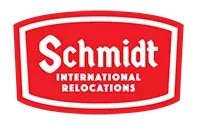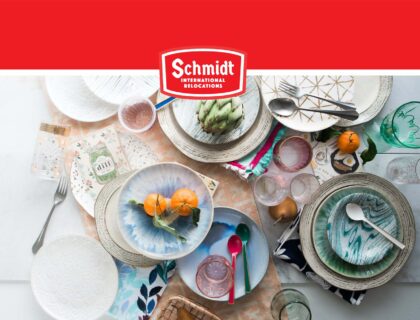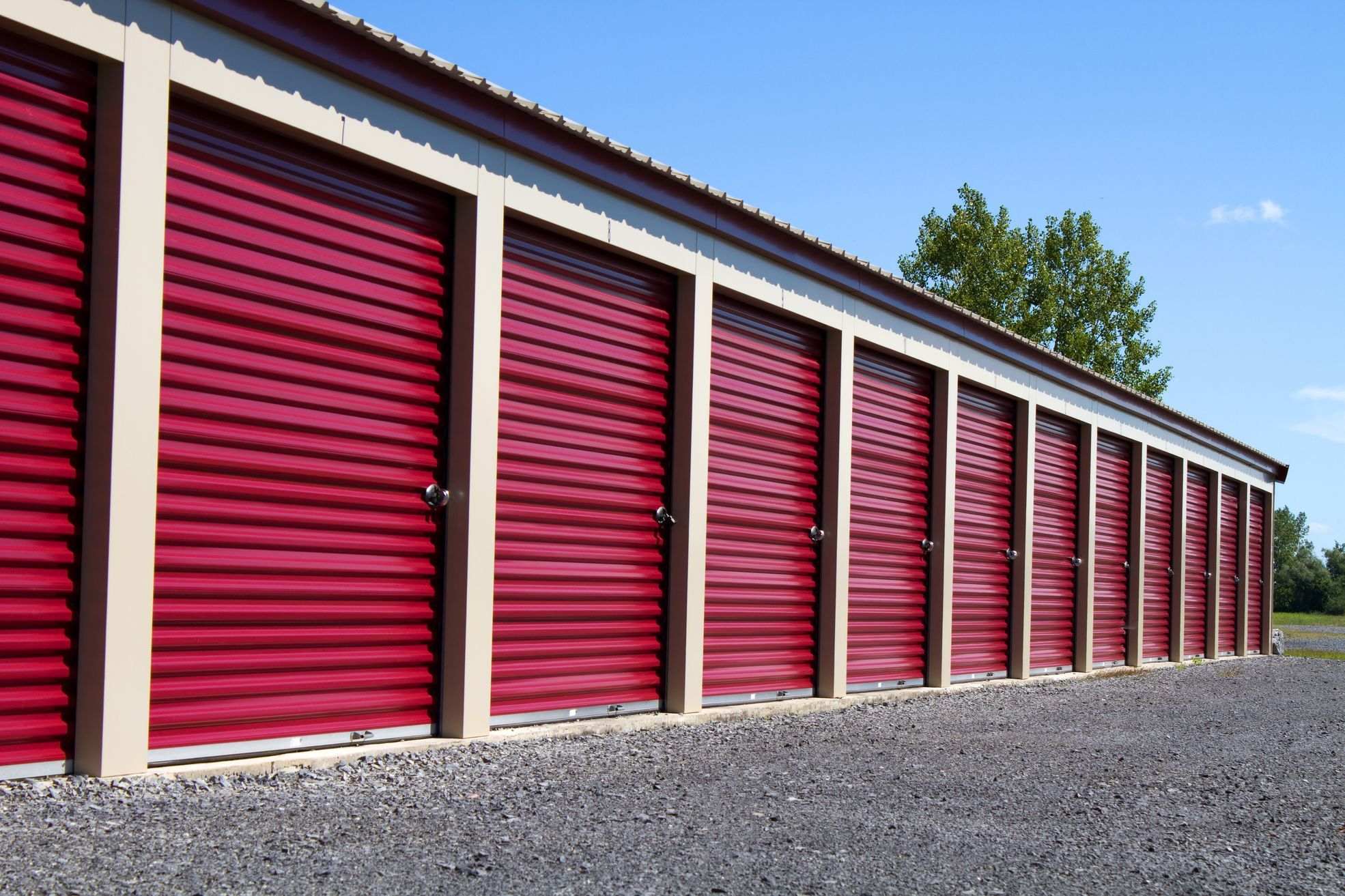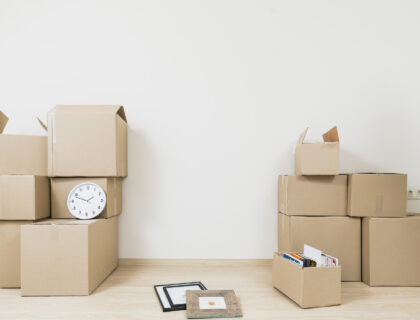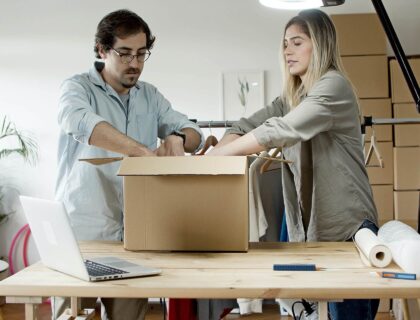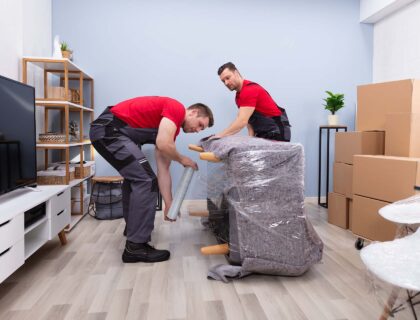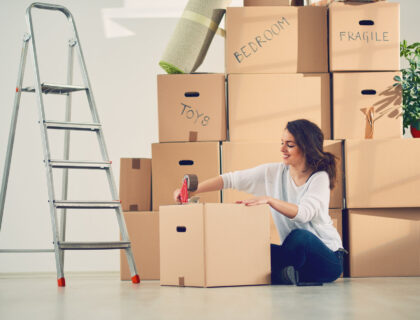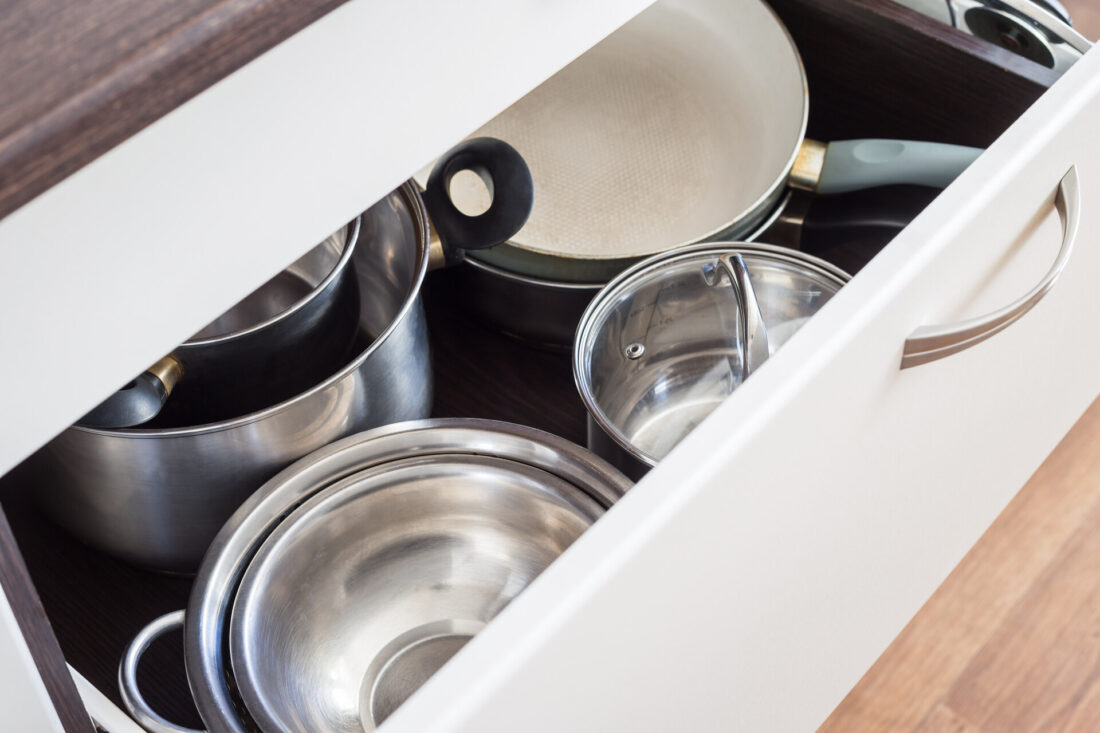

Moving internationally is a big and exciting step for anyone, but it can also come with significant stress. One of the most daunting tasks may be figuring out how to pack pots and pans for the move. Without proper packing, you could end up with damaged items upon arrival. To help reduce any potential headaches when moving abroad, we’ve outlined a step-by-step guide on how to properly pack your pots and pans for an international move!
The first step when packing pots and pans for moving abroad is assessing what you want to bring with you – you can later sell and donate items you don’t need. Gathering the necessary packaging materials is the second step. Next up, you should clean all the cookware that’s about to be packed. Now it’s time to wrap – use adequate wrapping techniques, and don’t forget to label the boxes. Always be careful with fragile items. If you’re not confident in your abilities to wrap dishes properly, don’t hesitate to hire international movers to help you out.
Step 1 – Assessing and Sorting the Cookware
When preparing to relocate overseas, it’s essential to assess your cookware collection and decide what items to keep and what items are not worth bringing along. Before looking for the best way to pack pots and pans, evaluate each item based on its condition, usefulness, and sentimental value. Discard any damaged or worn-out items that are beyond repair.
Consider the cooking needs in your new destination and prioritize wrapping dishes that can fulfill multiple purposes. If you haven’t used certain items in a long time or have duplicates, it may be wise to get rid of them when you relocate. Streamlining your cookware collection will make packing and moving overseas easier.
Tips for Selecting Essential Pots and Pans for the International Move
Choosing essential pots and pans for relocating overseas requires careful consideration. First, assess the cooking techniques you frequently use and select cookware that accommodates those needs. Opt for durable, multipurpose pieces that can withstand different heat sources. Non-stick pans are convenient but may not be suitable for high-temperature cooking or metal utensils. Consider the available space in your new home and prioritize compact, stackable cookware sets. Stainless steel and cast iron are popular choices for their durability and versatility.
Sell or Donate the Items You Don’t Want to Bring With You
When moving overseas, it’s wise to sell or donate the items you don’t want to bring along. Organize a garage sale or utilize online platforms to sell your unwanted pots and pans. Take clear photos, provide accurate descriptions, and set reasonable prices to attract potential buyers. Alternatively, consider donating your cookware to local charities, shelters, or community organizations. They can benefit from your generosity while ensuring that the items find new homes where they will be appreciated. Recycling old pots and pans not only reduces the number of items to pack but also helps someone else in need.

Step 2 – Gather Packing Materials
So, how to pack pots and pans for shipping when going to live overseas? First, you need proper packaging materials – these are your relocation essentials. Packaging pots and pans requires careful consideration to ensure their safe transportation. Proper packaging materials are essential to protect these kitchen items from damage during the move to another country. To safeguard your pots and pans, it is advisable to use sturdy and protective materials such as:
- Cardboard boxes,
- Bubble wrap,
- Packaging paper,
- Packing peanuts or paper balls,
- Packaging tape,
- Marker.
Eco-Friendly Packaging Alternatives
When it comes to packaging materials, it’s important to consider sustainable options that minimize environmental impact. With that in mind, here are some recommended eco-friendly packaging options for safely packing your pots and pans.
- Biodegradable packing peanuts,
- Recycled cardboard boxes,
- Eco-friendly bubble wrap alternatives,
- Reusable packaging materials.
By choosing eco-friendly alternatives, you can contribute to a greener and more sustainable relocation. These options prioritize the use of recycled or biodegradable materials, reducing the reliance on single-use plastics and promoting the circular economy.
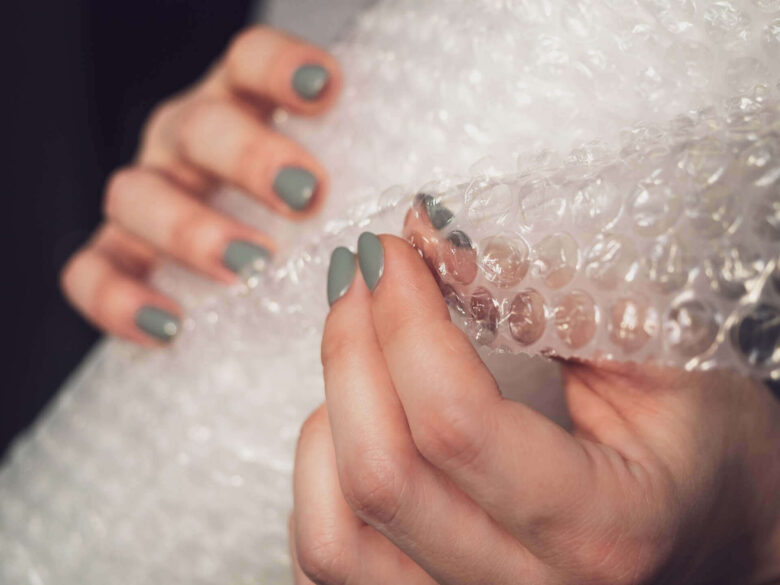
Step 3 – Cleaning and Preparing Cookware
Properly cleaning and preparing cookware is an essential step when it comes to packing to move abroad. To help you out before your big move across the world, we will explore the importance of cleaning cookware before boxing up and provide relocation tips on how to clean different types of cookware materials effectively.
Why Is It Important to Thoroughly Clean Pots and Pans Before Packing
Before stashing away your pots and pans, it is crucial to thoroughly clean them. Many people skip this step – keep in mind this is one of the common relocation mistakes. Firstly, cleaning cookware helps remove any leftover food particles, grease, or stains that may have accumulated during cooking. These residues can harbor bacteria and mold, posing health risks if left unattended.
By removing these substances, you prevent unpleasant odors and flavors from transferring onto other cookware items or contaminating your future meals in another country. Proper cleaning also helps extend the lifespan of your cookware, as built-up grime can deteriorate the surface and affect its overall performance over time. Therefore, taking the time to clean your pots and pans before packing them away is essential for both your health and the longevity of your cookware collection.
How to Clean Different Types of Cookware Materials
Different cookware materials require specific cleaning methods to ensure their preservation and effectiveness. Here are some guidelines for cleaning common types of cookware materials:
Stainless Steel
To clean stainless steel cookware, begin by soaking it in warm, soapy water for a few minutes to loosen any stuck-on residue. Use a non-abrasive sponge or cloth to scrub away the stains gently. For stubborn spots, create a paste using baking soda and water, apply it to the affected area, and let it sit for a while before scrubbing again. Rinse thoroughly and dry with a soft towel to prevent water spots.
Non-Stick Cookware
These should be cleaned with caution to avoid damaging the coating. Start by allowing the cookware to cool down completely before washing. Use a soft sponge or cloth along with mild dish soap and warm water to gently wipe away any food residue. Avoid using abrasive scrubbers or harsh chemicals, as they can scratch or deteriorate the non-stick coating. Rinse well and towel dry.
Cast Iron
Cleaning cast iron cookware requires special care to maintain its seasoning. Avoid using harsh detergents or soap, as they can strip away the seasoning. Try rinsing the cookware with hot water and use a stiff brush or scraper to remove any food particles instead. If needed, add a small amount of coarse salt to assist with stubborn stains. After cleaning, dry the cookware thoroughly, then apply a thin layer of oil to protect the surface and prevent rusting.
Copper Cookware
To clean copper cookware, create a mixture of equal parts vinegar and salt or lemon juice and salt. Apply this mixture to the cookware and gently scrub using a soft cloth or sponge. Rinse with warm water and dry immediately to avoid water spots. If the copper has developed a patina, you can use a copper cleaner or a paste made of baking soda and lemon juice to restore its shine.
Step 4 – Employ Proper Packing Techniques
So, let’s start by lining the bottom of the box with crumpled packing paper or dish towels. This provides a cushioning layer for the cookware. Now you can start filling the boxes. Place larger pots and pans at the bottom of the box. Stack them based on size, with the larger ones at the bottom and the smaller ones on top. To protect the cookware from scratches and damage, place a layer of packing paper or bubble wrap between each pot or pan. You can also use dish towels to wrap individual items.
For lids and covers, wrap them separately in packaging paper or bubble wrap to prevent them from scratching the cookware. Place them alongside the respective pots or pans. If there are any gaps or empty spaces in the box, fill them with crumpled packaging paper or bubble wrap to prevent movement during transportation. Once all the cookware is in the box, add a final layer of packaging paper or dish towels on top to provide extra cushioning. Close the box securely with packaging tape.
Proper wrapping, cushioning, and securing of cookware are crucial to prevent damage during transit. The materials used for packaging, such as paper, bubble wrap, and dish towels, provide cushioning and protect from scratches and impacts. Wrapping each pot and pan individually also prevents them from clanging against each other, reducing the risk of dents.
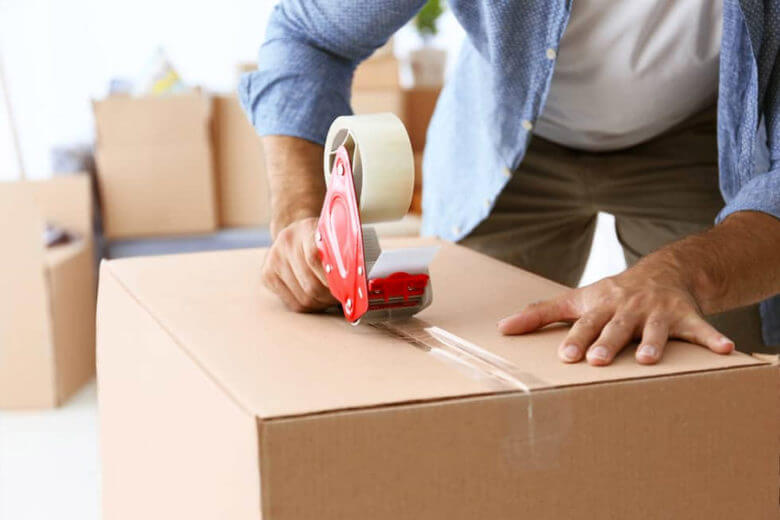
Organize and Label Boxes
Organizing and labeling the boxes containing your cookware will make unpacking and setting up your kitchen much easier. When wrapping, group similar-sized pots and pans together and stack them accordingly. This organization will help you locate specific items quickly when unpacking.
Label each box clearly with its contents, such as “Pots and Pans” or “Kitchen Cookware,” on multiple sides of the box. Additionally, you can number the boxes and maintain relocation inventory to keep track of what items are packed in each box. This labeling system will save time and effort when unpacking and setting up your kitchen in the new city.
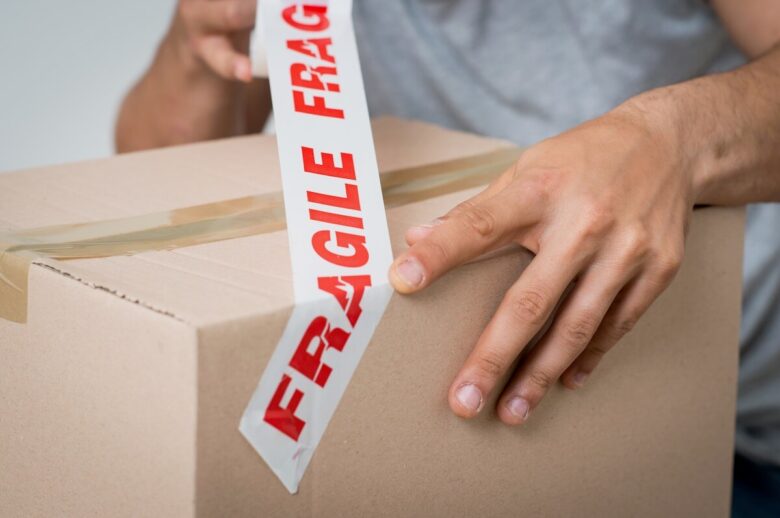
Step 5 – Take Into Consideration Fragile Cookware
When it comes to fragile or delicate cookware items, it’s important to take extra precautions during packaging to ensure their protection. Here are some special considerations and additional protective measures you can take.
Separate and Wrap Fragile Items Individually
When it comes to fragile pots, pans, or dishes, it is highly advised to wrap each item individually. Start by cleaning and drying the cookware thoroughly. Then, use layers of packaging paper or bubble wrap to wrap each piece separately. This provides a protective barrier against impacts and prevents items from scratching or breaking when they come into contact with each other.
Utilize Padding and Cushioning Materials
In addition to wrapping each fragile item, use extra padding and cushioning materials within the box. Place a layer of crumpled paper or bubble wrap at the bottom of the box as a cushioning base. You can also insert additional layers of padding between the wrapped items to minimize movement and provide added protection. Remember to fill any gaps in the box with packing material to prevent shifting during transit.
Consider Using Dish or Foam Dividers
To further protect fragile cookware, consider using dish or foam dividers. These dividers fit inside the box and provide individual compartments for each item, preventing them from touching and potentially causing damage. The dividers help distribute weight evenly and add an extra layer of protection against bumps and impacts.
Consider Specialty Packaging or Original Packaging
If you still have the original packaging for your fragile cookware, use it, as it was designed specifically to protect the item during transit. If you no longer have the original materials, you can explore specialty packaging options available for fragile items. These may include foam inserts, padded sleeves, or custom-sized boxes that provide optimal protection for delicate cookware.
Use a Double-Boxing Method
For extremely fragile cookware or valuable pieces, you may want to consider a double-boxing method. This involves placing the wrapped cookware in a smaller box with adequate padding and cushioning. Then, place this smaller box inside a larger box, adding additional padding between the two boxes. The double-boxing method provides an extra layer of protection against impacts and reduces the risk of breakage.
Not Sure How to Pack Pots and Pans for Moving Overseas? Hire an International Moving Company to Assist You
When embarking on a move abroad, enlisting the relocation services of an international moving company can greatly streamline the process and alleviate the associated relocation stress. International movers possess the expertise and resources to handle the complexities and logistics of overseas relocations, including the meticulous packing of your belongings. By getting professional packing assistance, you can reap several benefits.
Firstly, international relocation companies are well-versed in the packaging regulations and customs requirements of different countries, ensuring that your cookware and other items are packed in compliance with local regulations. They can also provide guidance on prohibited items and any restrictions specific to certain materials or substances.
Moreover, entrusting these responsibilities to professionals saves you valuable time and effort. These movers possess the necessary tools, materials, and techniques to efficiently and safely pack your cookware, allowing you to focus on other aspects of your move. Their expertise in packing fragile items ensures that your cookware is adequately protected during transit, reducing the risk of damage or breakage.
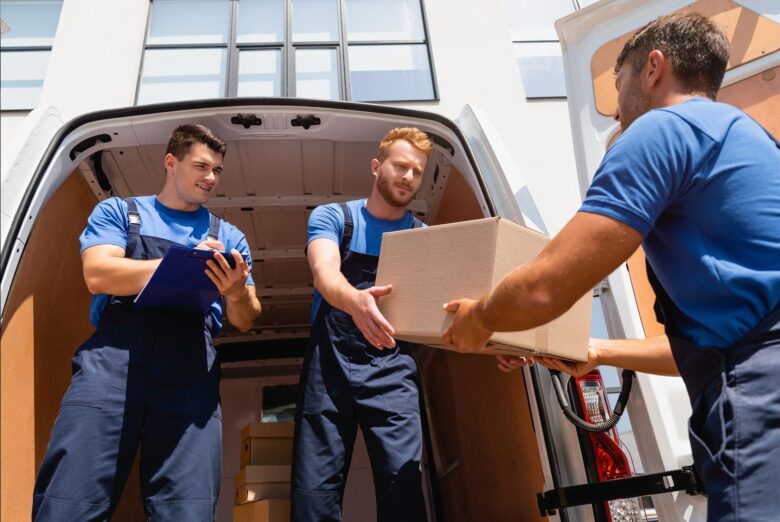
Reach Out to Schmidt International Relocations for Assistance With Your Upcoming Move
When seeking professional assistance for your upcoming relocation, Schmidt International Relocations is a reliable choice. With our expertise in international relocations, we can provide the support and services needed to ensure a smooth and stress-free experience.
Schmidt International Relocations has the knowledge and resources to handle every aspect of your transition to another country. Our commitment to customer satisfaction, attention to detail, and dedication to delivering your belongings safely to your new destination make us a trusted partner in the relocation process. Contact us today to receive personalized assistance tailored to your specific needs and embark on a successful journey abroad!
